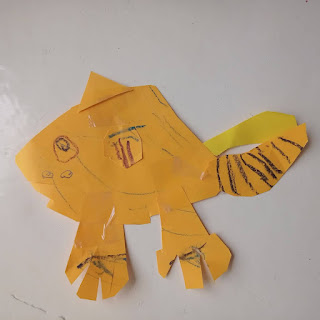The Storyteller
Near the end of summer, I realized that I had quite the collection of creatures that once existed in the mind of a five-year-old. This storyteller arrived in my class with all sorts of tales of adventure and discovery. Because of genuine interest, I would take time to sit, leaning slightly forward, and listen. While telling his tales, his fingers would be cutting shapes from colored paper, gluing bits, making more cuts, and maybe coloring a few. At some point, he would arrive at what I would assume to be the almost-end of his tale for the day. Almost, because I noticed that my storyteller would not really provide an obvious ending but would pause for a sip from his water bottle, or stand abruptly and move near the AC and that would be that. Sometimes unsure if he was actually finished telling his story, I would let a minute settle before I brought out a picture book and proceed with our Reading Class.
 Time and space are essential to everyone in early childhood settings - time for children to experience and discover things in their space, to make choices; space for educators to observe and document, time to listen and learn from children; to not blindly push agenda. Time and space support children’s need to BE who they are and provide room for them to BECOME so much more, all the while making them feel they BELONG.
Time and space are essential to everyone in early childhood settings - time for children to experience and discover things in their space, to make choices; space for educators to observe and document, time to listen and learn from children; to not blindly push agenda. Time and space support children’s need to BE who they are and provide room for them to BECOME so much more, all the while making them feel they BELONG.
These are now on display in what would be my classroom for the coming school year.





